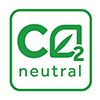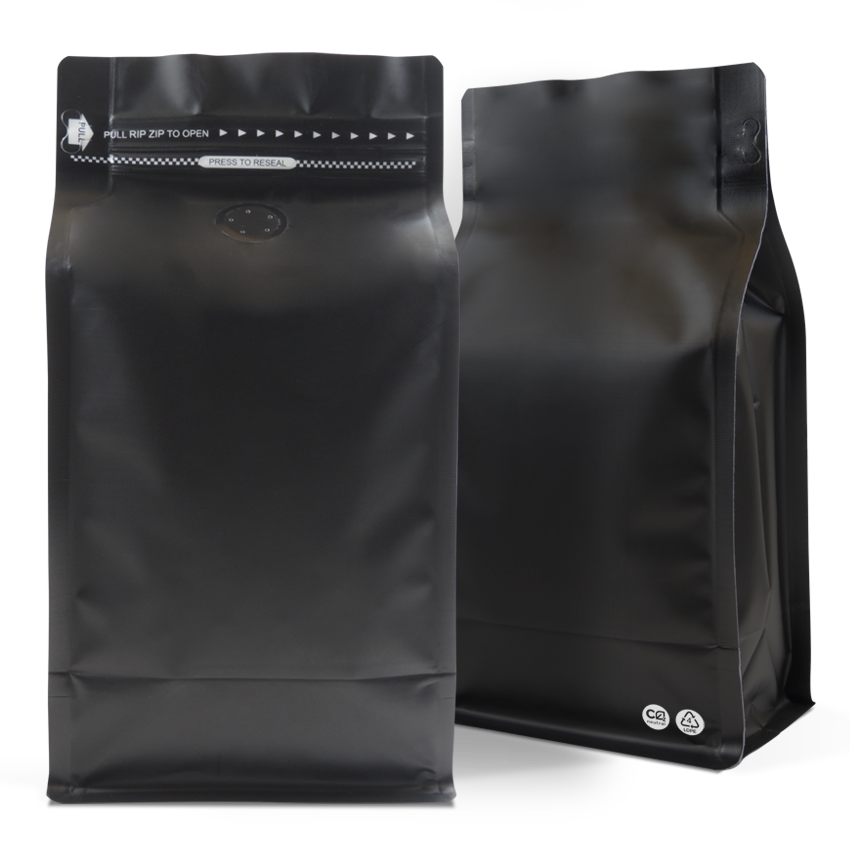DEFINITIONS OF TERMS
2-ply laminate.
A term for a 2-layer laminate, it typically consists of an outer layer of PET or vinyl and an inner layer of LLDPE. The LLDPE can be white, in which case the laminate will appear opaque. The LLDPE can also be clear, in which case the laminate will be clear. 2-ply laminate will often have a better look than traditional 3-ply laminate; however, the shelf life of coffee products packed in 2-layer laminate will be shorter, as the contents are less shielded against light and oxygen.
3-ply laminate.
A 3-ply laminate is a 3-layer laminate, where the middle layer can be AL, or VMPET. 3-ply laminates protect the contents against oxygen and light better than 2-ply laminates.
AL.
AL (Aluminium) is used as a light and oxygen barrier in 3-ply materials, due to its excellent insulation against oxygen and light.
Artwork.
Graphics and picture files submitted to the laminate producer in order to have it printed on bags or roll stock. Software normally used for creating and processing artwork includes Adobe Illustrator, Adobe Freehand, and Adobe Photoshop.
For guidelines regarding how to submit artwork to The Bag Broker, please press this link. More Info
Custom print.
The rotogravure printing of logos, descriptions and pictures on bags, pouches, or laminate according to designs submitted by the customer. All kinds of coffee bags and all laminate except for aluminium foil and gold foil are printed. Therefore, when ordering bags or laminate, considering a custom print solution as an alternative could give you the edge over your competition.
Die lines.
Die lines and pouch lines measure the form and shape of the bag, and is an aid in the artwork design phase. For roll stock, they are called die lines, and for pre-made bags, the term is pouch lines.
Dry laminate. A solvent based adhesive lamination offering the best bond strength in the market. Dry laminate cuts a bit easier than wet laminate, but is less cost effective.
Easy Peel laminate.
Certain kinds of laminate will open easier than other kinds, due to a slightly different chemical setup of the LLDPE. The Bag Broker offers easy peel bags on request.
Laminate.
Laminate is a composite material made of 2 or more dissimilar substrates such as PET and AL bonded together. At the Bag Broker, we use the term to denote all foils used in roll stock or bags. A laminate for coffee bags and roll stock can be 2-ply or 3-ply, with the outer layer being Natural Kraft, PET, or Vinyl. The optional central barrier substrate can be AL or VMPET, and the inner substrate is usually LLDPE. The generic term for laminate is web.
Laminate production process.
After the artwork has been processed and approved, the production process starts with the manufacture of the print drums. Once test prints have been made, the production process, with the image being reverse printed in up to 8 colours on the outer PET substrate. The next step is the lamination, where the substrates are bonded together. After this, the laminate is wound, cut, and packaged.
Lamination.
A process by which a sandwich of film layers is bound together by adhesives, coatings, or other polymers to form substrates with improved physical and chemical properties. The manufacturers the Bag Broker cooperates with offer dry lamination and wet lamination.
LLDPE.
Linear low-density polyethylene. A strong, clear or white film ideal for packaging of foods. It is heat sealable, has excellent puncture and tear resistance, and has a high degree of stiffness. It is used as the inner layer in all laminates used by the Bag Broker. The varieties used in coffee bags by the Bag Broker meet FDA regulations, including EU and German safety standards for food packaging.
Natural Kraft.
A durable strong form of paper that can be used as the outer substrate on bags and pouches. Gives a more natural feeling to the bag. Natural Kraft can be printed in up to 8 colours.
OPP.
Abbreviation for Oriented Polypropylene. This material is used as a substitute for PET due to more competitive pricing and the ability of the material to have a matt finish. Laminate made used this outer substrate tends to wrinkle easier when heat-sealed.
PE.
Abbreviation for polyethylene. Used as a bonding agent in wet lamination.
PET.
Polyethylene terephthelate is a form of polyester. It is often used as the outer substrate on laminates, due to its excellent tear strength, elongation properties and its competitive price. Images and artwork is usually printed on the reverse side of it.
Pre-made bags.
Bags already formed at the factory. This is as opposed to roll stock.
Print drums.
When rotogravure printing the images onto the reverse side of the outer substrate, round print drums are used. They are made of stainless steel. For smaller production runs, etched drums are the most cost-effective solution, for very high quality or large, repeated print runs, more expensive engraved print drums are the best solution. Print drums are re-usable.
Rotogravure printing.
This kind of printing takes place on printing machines, using steel or copper print drums. The image is printed onto the reverse side (inner) of the outer substrate. The colours are printed onto the substrate one colour at the time.
SiO3 coated PET.
This non-metallic substrate is a new and exciting development in the flexible packaging industry. First, it enables the elimination of metal foils such as AL and VMPET from the packaging. Secondly, it enables the bag to be partly transparent, while maintaining high barrier properties.
Substrate.
The generic term for the layers of which the laminate is composed. A wide range of materials can be used, such as AL, LLDPE, Natural Kraft, PE, PET, VMPET, and Vinyl. The choice of material depends on the use of the final laminate.
Vinyl.
Polyvinyl chloride, another name for PVC. This strong clear material is used as the outer substrate on some coffee bags. It presents well, has excellent elongation and tear strength properties, and is used on coffee bags, where appearance is more important than price.
VMPET.
Metallized PET. This material consists of PET, which has been metallized with aluminium. It serves as a light and oxygen barrier and is often used instead of aluminium. It has a slightly more smooth appearance than Aluminium; however, it is slightly less efficient as a light/oxygen barrier. It is, however, cheaper and more environmentally friendly.
Wet Lamination.
This type of lamination offers a cost-effective alternative to a dry lamination and is used when the product does not require the strongest bond strength. The bonding liquid used by our manufacturers is PE resin.
Wico-valve.
A degassing valve that is used for the release of CO2 and retention of oxygen. After the roasting of coffee beans, normally during a period of 2 weeks, CO2 is naturally realised. In order to allow the CO2 to be released, whilst retaining oxygen, which maintains the freshness of the coffee, a one-way valve is required. The Wico-valve is regarded as one of the market leaders within this industry.


